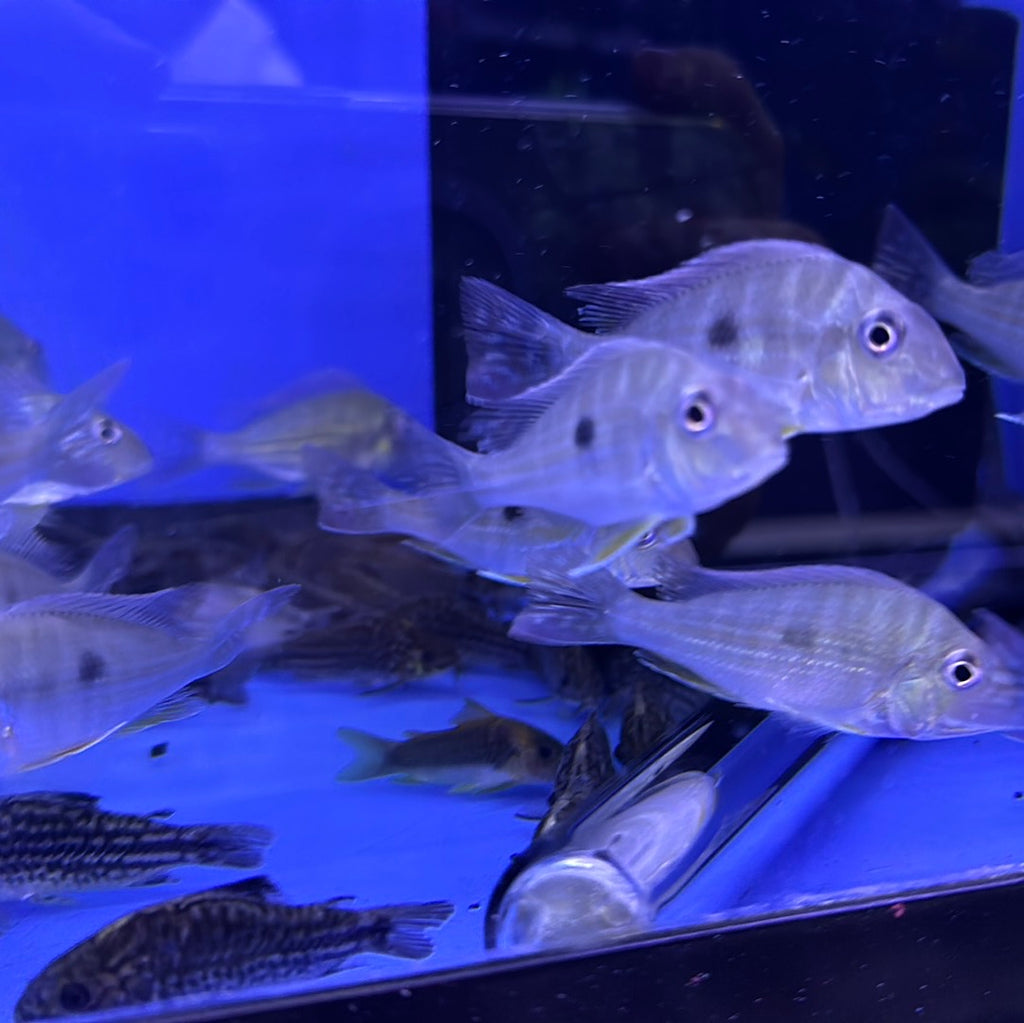Geophagus surinamensis, commonly known as the Surinamensis cichlid or the Surinam eartheater, is a species of freshwater fish belonging to the Cichlidae family. It is native to the rivers and waterways of Suriname and other parts of South America, including Guyana and French Guiana. This species is highly valued in the aquarium trade due to its striking appearance and interesting behavior.
The Surinamensis cichlid has a distinctive elongated body shape, with males growing slightly larger than females. They can reach a size of around 8-10 inches (20-25 cm) in length when fully mature. The body coloration varies depending on the individual and their mood, but it typically features a combination of brown, yellow, and black patterns. The dorsal fin often displays vibrant red or orange hues, adding to its visual appeal.
In terms of temperament, Geophagus surinamensis is generally considered peaceful but can display territorial behavior, especially during breeding. It is best kept in a spacious aquarium with plenty of hiding spots and territories defined by rocks, caves, or driftwood. Providing a sandy substrate is important as these fish are known to sift through it in search of food.
Water conditions should mimic their natural habitat. Surinamensis cichlids prefer warm water with temperatures ranging from 75°F to 82°F (24°C to 28°C). They thrive in slightly acidic to neutral water with a pH level between 6.0 and 7.5. Regular water changes and maintaining good water quality are essential for their health and well-being.
Feeding Geophagus surinamensis is relatively easy as they are omnivorous. In the wild, they feed on a variety of small invertebrates, worms, insects, crustaceans, and plant matter. In the aquarium, they can be fed a balanced diet consisting of high-quality pellets, flakes, frozen or live foods such as brine shrimp, bloodworms, and small earthworms. Offering a varied diet will help promote their overall health and vibrant coloration.
Breeding Surinamensis cichlids can be challenging, but with the right conditions, they can reproduce in aquariums. They are substrate spawners, and both parents play a role in guarding and caring for the eggs and fry. It is recommended to provide flat surfaces such as rocks or clay pots for them to lay their eggs on. The water conditions should be suitable, with slightly elevated temperatures and good water quality. The fry can be fed with newly hatched brine shrimp or finely crushed flakes until they are large enough to consume regular-sized foods.
Overall, Geophagus surinamensis is a captivating species that adds vibrancy and activity to freshwater aquariums. With proper care, suitable tank mates, and appropriate environmental conditions, they can thrive and become a centerpiece fish in a community setup.

